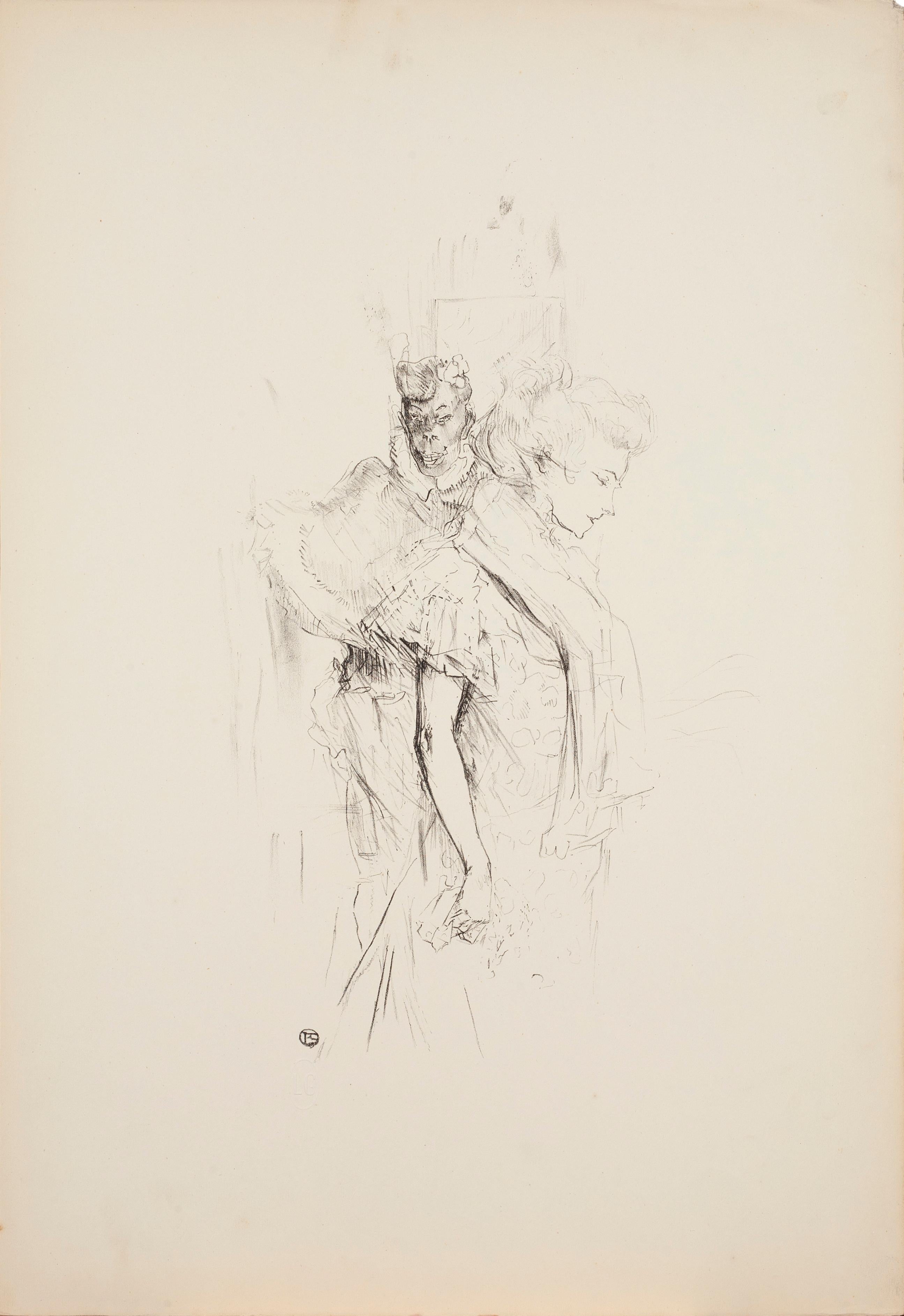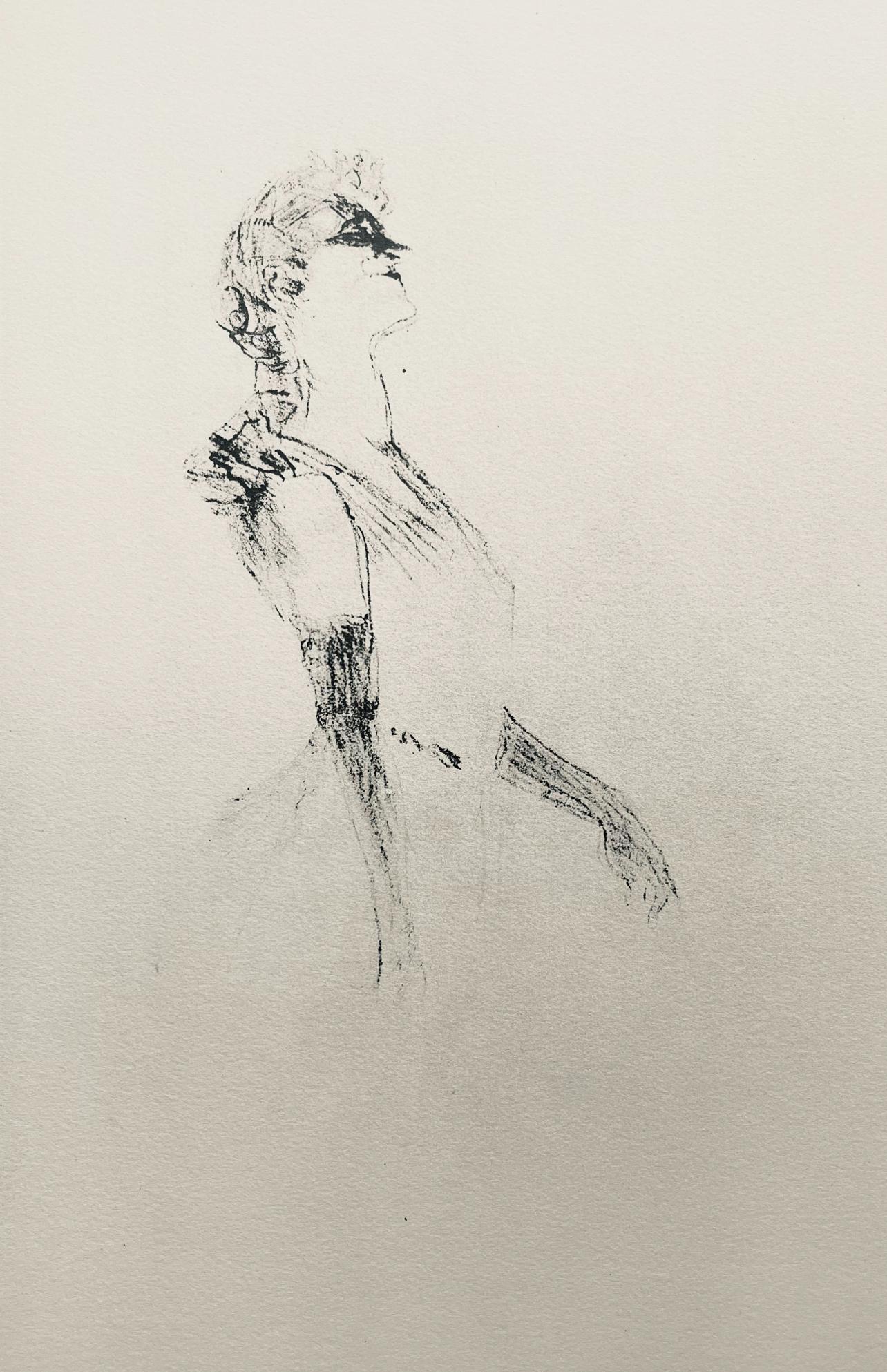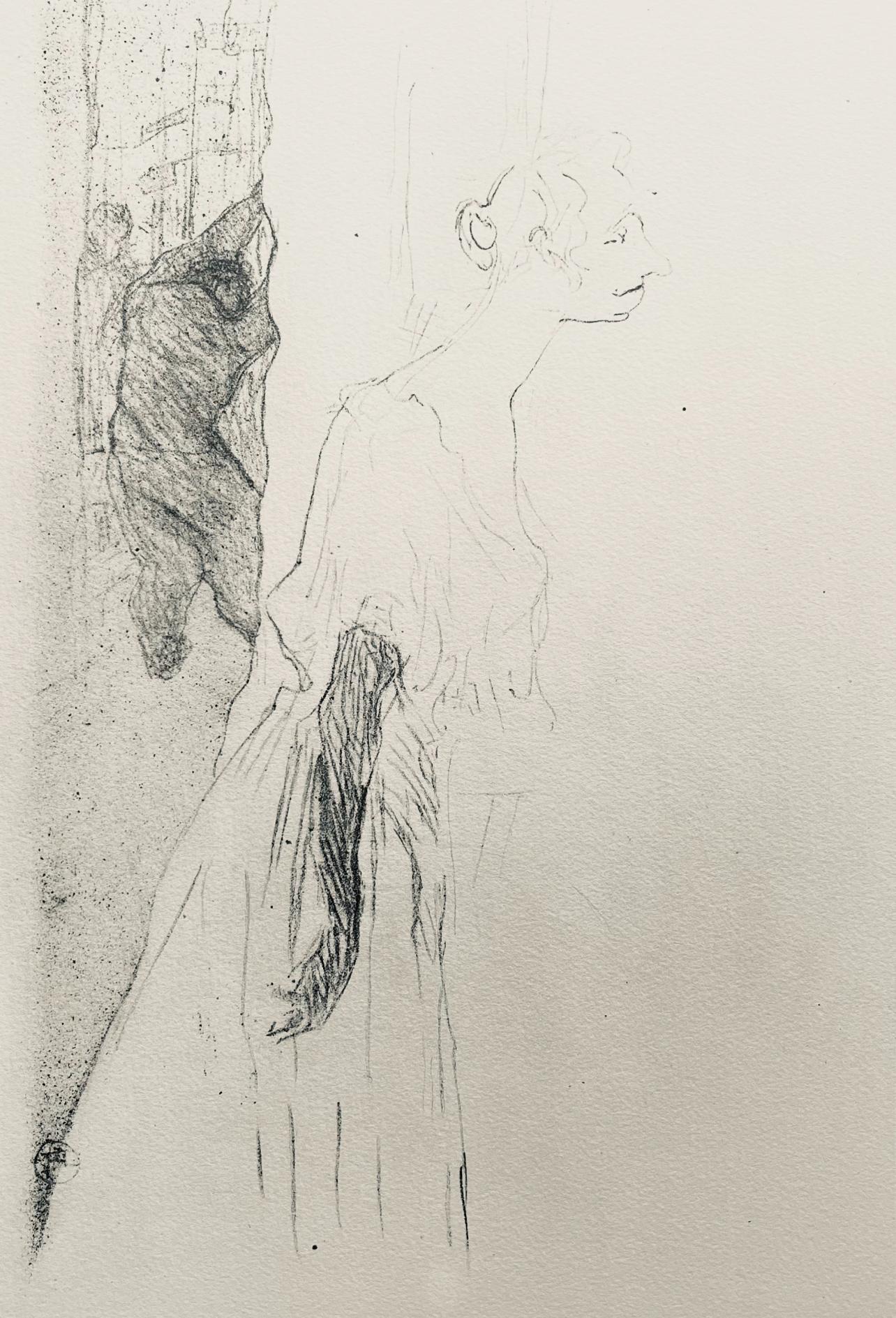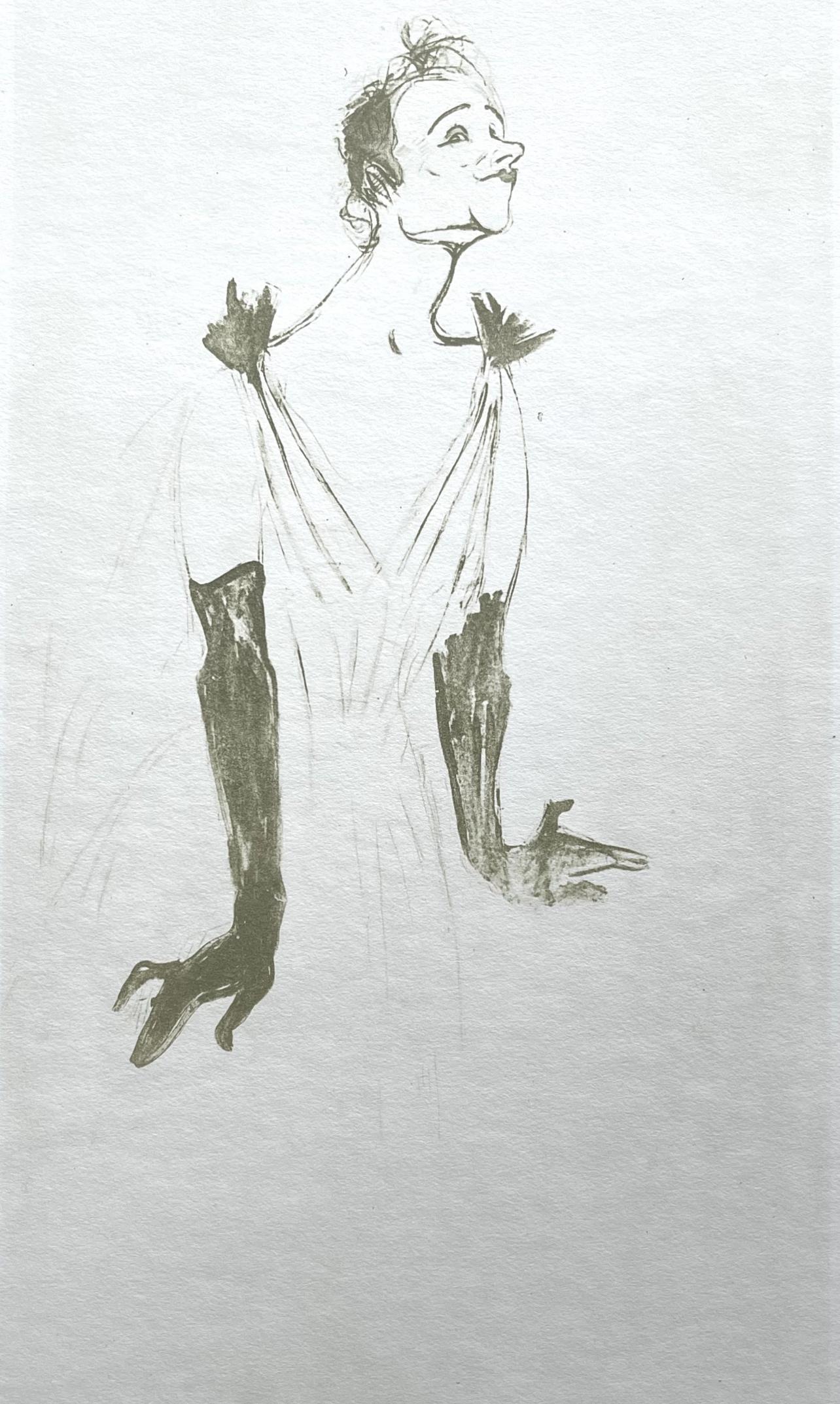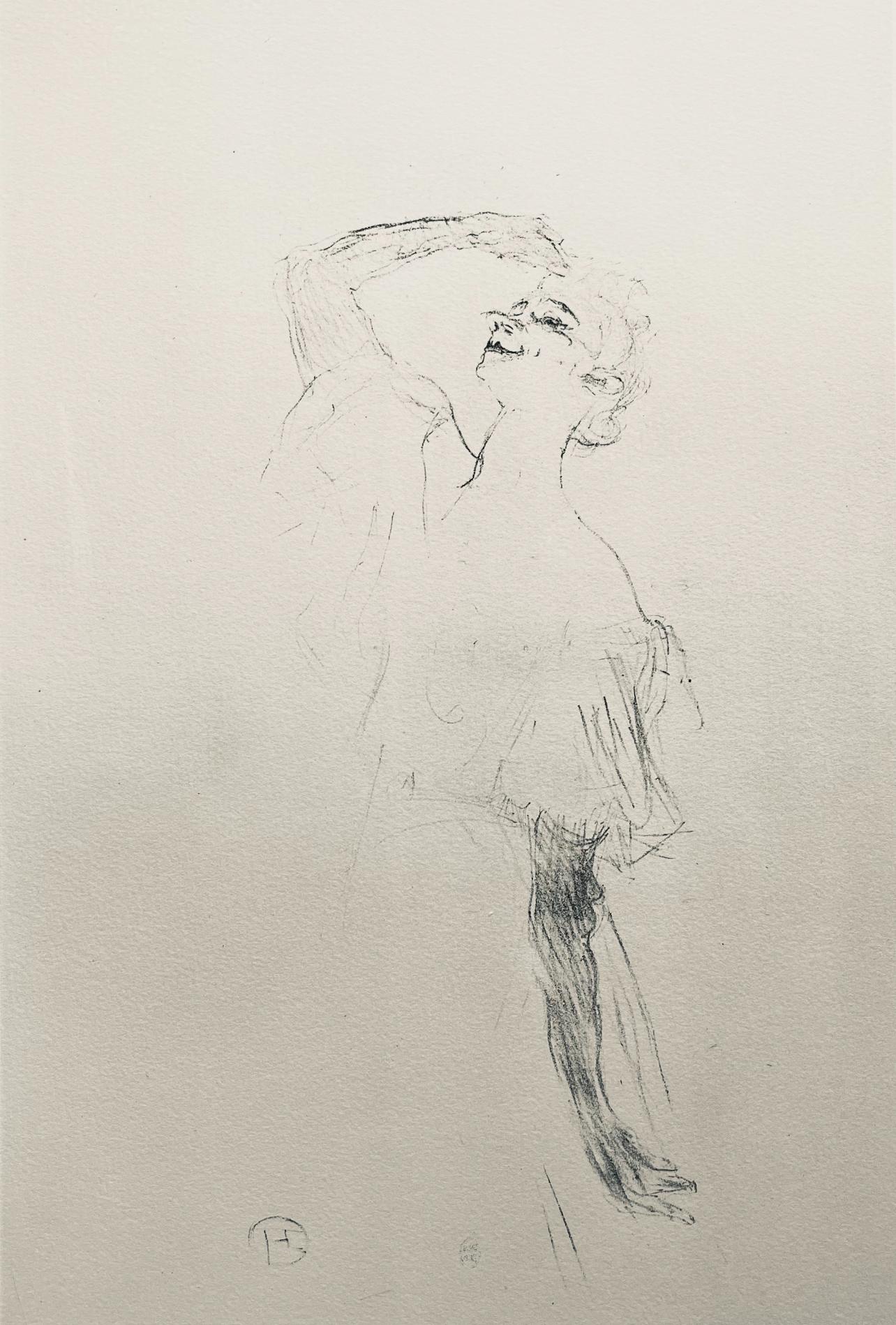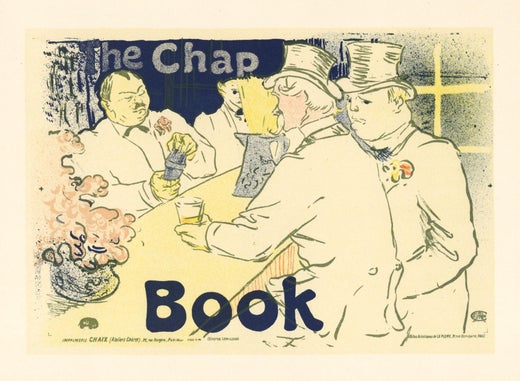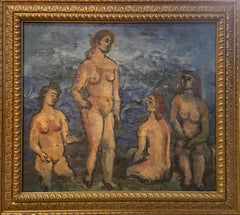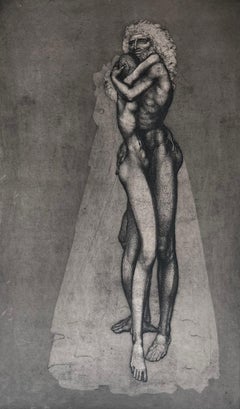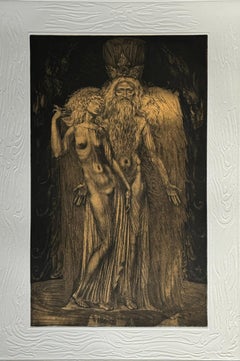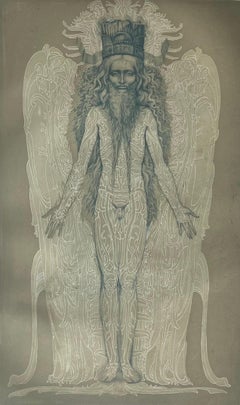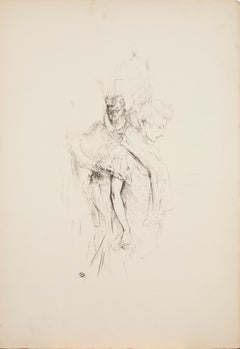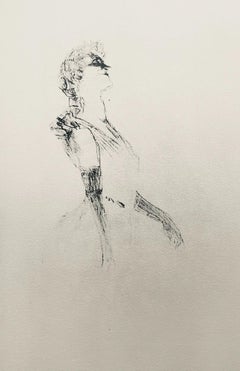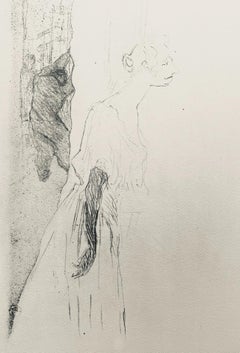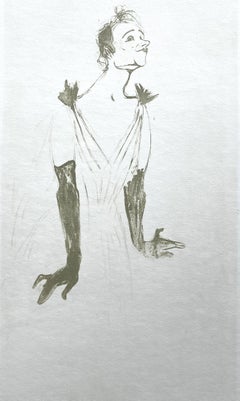Items Similar to Blanche et Noire
Want more images or videos?
Request additional images or videos from the seller
1 of 7
(After) Henri Toulouse LautrecBlanche et Noire1896
1896
$15,000
£11,450.40
€13,163
CA$21,107.68
A$23,472.62
CHF 12,328.33
MX$286,976.30
NOK 153,622.77
SEK 144,824.78
DKK 98,238.55
About the Item
Blanche et Noire, de l'album «Toulouse-Lautrec, douze lithographies»
52,2 x 35,9 cm
- Creator:(After) Henri Toulouse Lautrec (1864, French)
- Creation Year:1896
- Dimensions:Height: 16.3 in (41.41 cm)Width: 12.8 in (32.52 cm)
- Medium:
- Movement & Style:
- Period:
- Condition:
- Gallery Location:Cliffside Park, NJ
- Reference Number:1stDibs: LU2358212038542
(After) Henri Toulouse Lautrec
Henri de Toulouse-Lautrec (1864 – 1901) was a French painter, printmaker, draughtsman, caricaturist and illustrator whose immersion in the colourful and theatrical life of Paris in the late 19th century allowed him to produce a collection of enticing, elegant and provocative images of the modern, sometimes decadent, affairs of those times. Toulouse-Lautrec is among the best-known painters of the Post-Impressionist period, with Cézanne, Van Gogh and Gauguin. As a young child, his parents separated after the death of his brother and a nanny eventually took care of him. At the age of eight, he went to live with his mother in Paris where he drew sketches and caricatures in his exercise workbooks. The family quickly realized that his talents lay in drawing and painting. Due to improper healing of two leg fractures, as an adult he was extremely short (4' 8"). He developed an adult-sized torso, while retaining his child-sized legs. Physically unable to participate in many activities enjoyed by males his age, Toulouse-Lautrec immersed himself in art. He became an important Post-Impressionist painter, Art Nouveau illustrator, and lithographer, and, through his works, recorded many details of the late-19th-century bohemian lifestyle in Paris.
About the Seller
5.0
Vetted Professional Seller
Every seller passes strict standards for authenticity and reliability
1stDibs seller since 2023
17 sales on 1stDibs
- ShippingRetrieving quote...Shipping from: Cliffside Park, NJ
- Return Policy
Authenticity Guarantee
In the unlikely event there’s an issue with an item’s authenticity, contact us within 1 year for a full refund. DetailsMoney-Back Guarantee
If your item is not as described, is damaged in transit, or does not arrive, contact us within 7 days for a full refund. Details24-Hour Cancellation
You have a 24-hour grace period in which to reconsider your purchase, with no questions asked.Vetted Professional Sellers
Our world-class sellers must adhere to strict standards for service and quality, maintaining the integrity of our listings.Price-Match Guarantee
If you find that a seller listed the same item for a lower price elsewhere, we’ll match it.Trusted Global Delivery
Our best-in-class carrier network provides specialized shipping options worldwide, including custom delivery.More From This Seller
View AllUntitled (Women)
Located in Cliffside Park, NJ
Large and impressive painting by Louis Harris, 1902-1970
Born in St. Louis, Harris moved to New York in 1920 and studied at the Art Students League with Max Weber. There he met other...
Category
1930s Abstract Expressionist Figurative Paintings
Materials
Oil
Engraving #13 by Ernst Fuchs: KABBALAH (SEFER YETSIRA and 32 PATHS OF WISDOM)
By Ernst Fuchs
Located in Cliffside Park, NJ
Original engraving #13 by Ernst FUCHS from Kabbalah (THIRTY-TWO PATHS OF WISDOM by SEFER YETZIRA), 1978
Etching signed and numbered 16/30 E.A.
Page size - 30 x 22 in 76 x 56 cm
Imag...
Category
1970s Modern Figurative Prints
Materials
Paper, Etching
Engraving #1 by Ernst Fuchs: KABBALAH (SEFER YETSIRA and 32 PATHS OF WISDOM)
By Ernst Fuchs
Located in Cliffside Park, NJ
Original engraving #7 by Ernst FUCHS from Kabbalah (THIRTY-TWO PATHS OF WISDOM by SEFER YETZIRA), 1978
Etching signed and numbered 16/30 E.A.
Page size - 30 ...
Category
1970s Modern Figurative Prints
Materials
Paper, Etching
Engraving #3 by Ernst Fuchs: KABBALAH (SEFER YETSIRA and 32 PATHS OF WISDOM)
By Ernst Fuchs
Located in Cliffside Park, NJ
Original engraving #3 by Ernst FUCHS from Kabbalah (THIRTY-TWO PATHS OF WISDOM by SEFER YETZIRA), 1978
Etching signed and numbered 16/30 E.A.
Page size - 30 x 22 in 76 x 56 cm
Image...
Category
1970s Modern Figurative Prints
Materials
Paper, Etching
Untitled (Nude)
Located in Cliffside Park, NJ
Well executed basic nude. Likely early 20th century or late 19th.
Category
Early 20th Century Nude Paintings
Materials
Oil, Acrylic
Engraving #4 by Ernst Fuchs: KABBALAH (SEFER YETSIRA and 32 PATHS OF WISDOM)
By Ernst Fuchs
Located in Cliffside Park, NJ
Original engraving #4 by Ernst FUCHS from Kabbalah (THIRTY-TWO PATHS OF WISDOM by SEFER YETZIRA), 1978
Etching signed and numbered 16/30 E.A.
Page size - 30 x 22 in 76 x 56 cm
Image...
Category
1970s Modern Figurative Prints
Materials
Paper, Etching
You May Also Like
Blanche et Noire
Located in Columbia, MO
HENRI DE TOULOUSE-LAUTREC
Blanche et Noire
1948
Lithograph on paper
Ed. 166/740
20.5 x 14 inches
Category
19th Century Post-Impressionist Figurative Prints
Materials
Lithograph
Toulouse-Lautrec, Composition, Yvette Guilbert vue par Toulouse-Lautrec (after)
By Henri de Toulouse-Lautrec
Located in Southampton, NY
Lithograph and stencil on vélin Rives BFK paper. Unsigned and unnumbered, as issued. Good Condition; never framed or matted. Notes: From the folio, Yvette Guilbert vue par Toulouse-Lautrec, 1950. Published by Librairie Au Pont des Arts, Paris; rendered by Daniel Jacomet; and, printed by Ateliers Daniel Jacomet et Cie, Paris, Monday, October 30, 1950. Excerpted from the folio (translated from French), This album, including all the prints dedicated by Toulouse-Lautrec to Yvette Guilbert, was printed for the Librairie Au Pont des Arts, by D. Jacomet. The color state of the Colombine plate in Pierrot and the twenty-seven plates of the French and English series were executed according to the original lithographs (before the letter for the French suite) from the Toulouse-Lautrec workshop and kept in the Cabinet des Stampes of the National Library. The collection includes three plates in color and twenty-eight plates in black. All copies also include a lithograph: Colombine à Pierrot, taken, after special authorization from the Musée d'Albi, on the original stone of Toulouse-Lautrec, by Lucien Détruit. It was taken from this album: A non-trade and nominative example; L examples on a large vélin of Rives including: III proofs of the lithography Colombine à Pierrot printed...
Category
1950s Post-Impressionist Figurative Prints
Materials
Lithograph, Stencil
$716 Sale Price
20% Off
Free Shipping
Toulouse-Lautrec, Composition, Yvette Guilbert vue par Toulouse-Lautrec (after)
By Henri de Toulouse-Lautrec
Located in Southampton, NY
Lithograph and stencil on vélin Rives BFK paper. Unsigned and unnumbered, as issued. Good Condition; never framed or matted. Notes: From the folio, Yvette Guilbert vue par Toulouse-...
Category
1950s Post-Impressionist Figurative Prints
Materials
Lithograph, Stencil
$716 Sale Price
20% Off
Free Shipping
Toulouse-Lautrec, Composition, Yvette Guilbert vue par Toulouse-Lautrec (after)
By Henri de Toulouse-Lautrec
Located in Southampton, NY
Lithograph and stencil on vélin Rives BFK paper. Unsigned and unnumbered, as issued. Good Condition; never framed or matted. Notes: From the folio, Yvette Guilbert vue par Toulouse-Lautrec, 1950. Published by Librairie Au Pont des Arts, Paris; rendered by Daniel Jacomet; and, printed by Ateliers Daniel Jacomet et Cie, Paris, Monday, October 30, 1950. Excerpted from the folio (translated from French), This album, including all the prints dedicated by Toulouse-Lautrec to Yvette Guilbert, was printed for the Librairie Au Pont des Arts, by D. Jacomet. The color state of the Colombine plate in Pierrot and the twenty-seven plates of the French and English series were executed according to the original lithographs (before the letter for the French suite) from the Toulouse-Lautrec workshop and kept in the Cabinet des Stampes of the National Library. The collection includes three plates in color and twenty-eight plates in black. All copies also include a lithograph: Colombine à Pierrot, taken, after special authorization from the Musée d'Albi, on the original stone of Toulouse-Lautrec, by Lucien Détruit. It was taken from this album: A non-trade and nominative example; L examples on a large vélin of Rives including: III proofs of the lithography Colombine à Pierrot printed...
Category
1950s Post-Impressionist Figurative Prints
Materials
Lithograph, Stencil
$716 Sale Price
20% Off
Free Shipping
Toulouse-Lautrec, Composition, Femmes De Lautrec (after)
By Henri de Toulouse-Lautrec
Located in Fairfield, CT
Medium: Lithograph and stencil on vélin paper
Year: 1954
Paper Size: 13.5 x 9.5 inches
Inscription: Unsigned and unnumbered, as issued
Notes: From the folio, Femmes de Lautrec, 21 Pl...
Category
1950s Post-Impressionist Figurative Prints
Materials
Lithograph
$716 Sale Price
20% Off
Toulouse-Lautrec, Composition, Yvette Guilbert vue par Toulouse-Lautrec (after)
By Henri de Toulouse-Lautrec
Located in Southampton, NY
Lithograph and stencil on vélin Rives BFK paper. Unsigned and unnumbered, as issued. Good Condition; never framed or matted. Notes: From the folio, Yvette Guilbert vue par Toulouse-...
Category
1950s Post-Impressionist Figurative Prints
Materials
Lithograph, Stencil
$716 Sale Price
20% Off
Free Shipping
